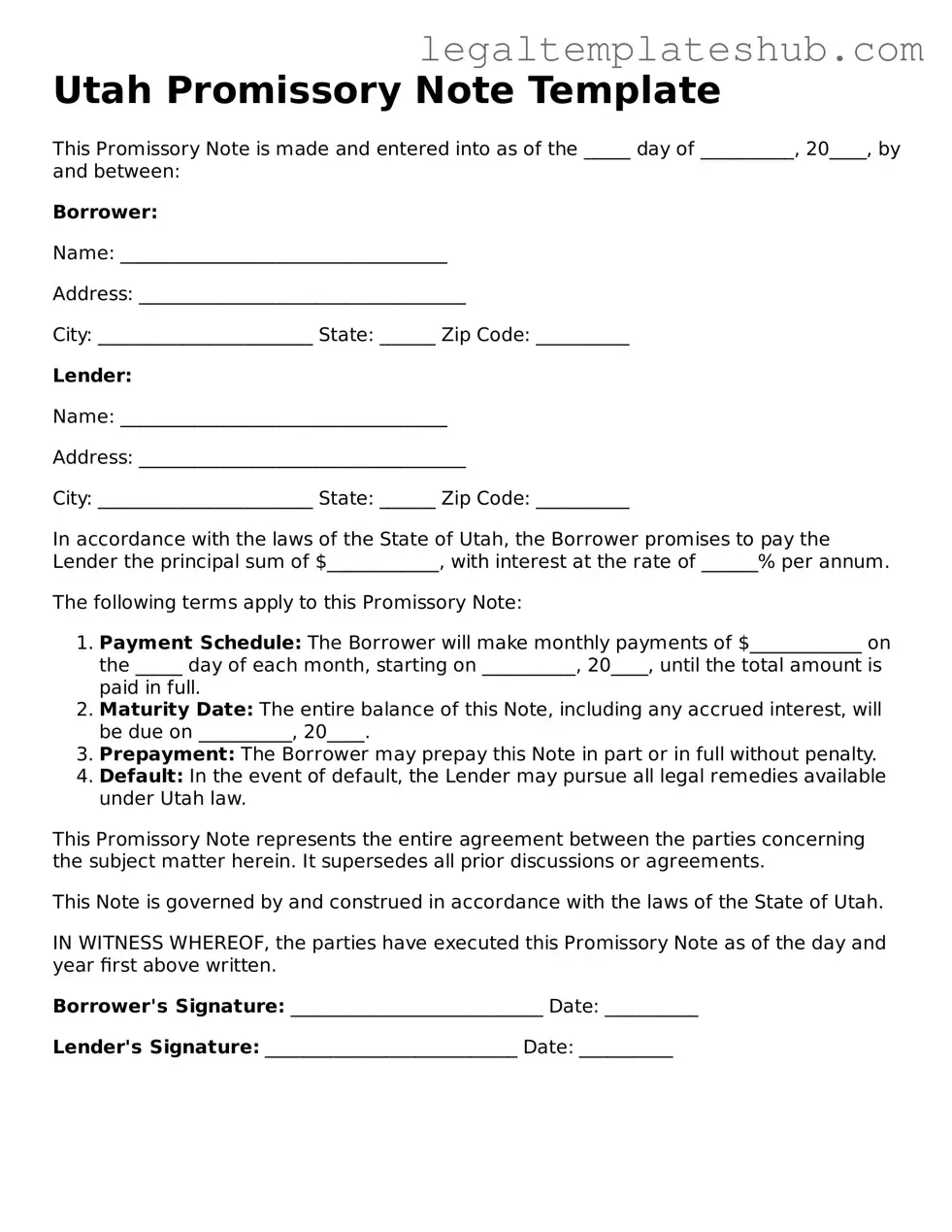Printable Promissory Note Document for Utah
A Utah Promissory Note is a legal document that outlines a borrower's promise to repay a loan to a lender under specified terms. This form serves as a written record of the agreement, detailing the amount borrowed, interest rate, and repayment schedule. For those looking to formalize a loan agreement, filling out the form is a crucial step; click the button below to get started.
Access Editor
